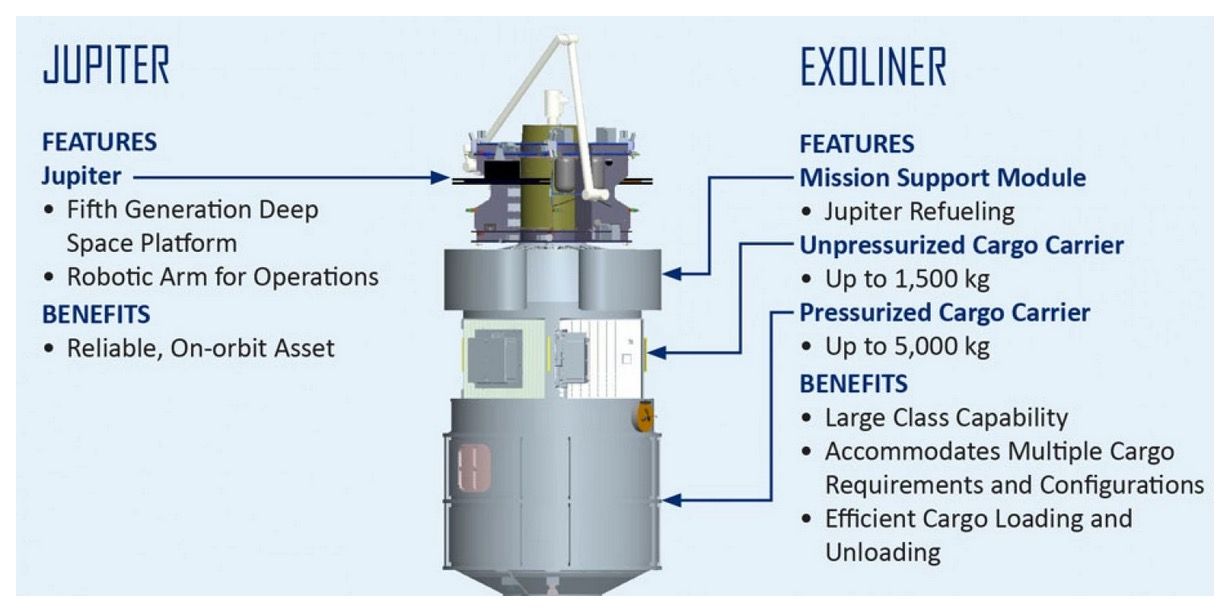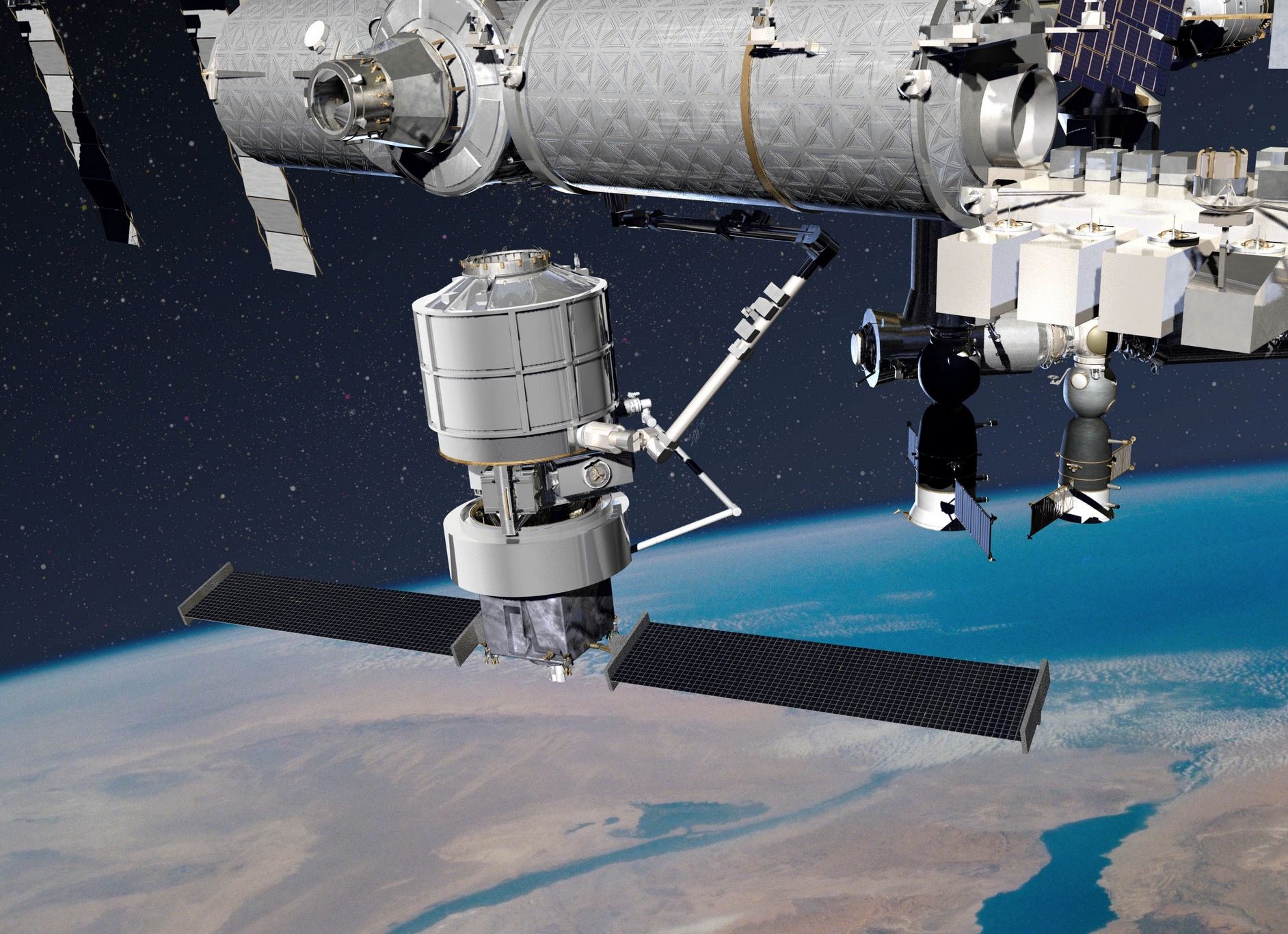Lockheed Martin has a new spacecraft that can ferry supplies to the International Space Station and double as a habitat for astronauts in deep space, so it's hoping to a win a NASA contract that'll allow it to put the spacecraft to work.
Considered the nation's largest defense contractor, Lockheed Martin is one of many space companies competing for new NASA contracts. Elon Musk's SpaceX and Boeing are also among the competition. NASA has actually outsourced resupply missions to SpaceX, in which the space company brings things like groceries to the orbiting space laboratory, but now NASA is getting ready to do another round of contracts in June.
Lockheed Martin believes its new Jupiter system, which is able to take cargo to space, is different from the competition. Jupiter includes a cargo container called an Exoliner. It's able to launch on an Atlas V rocket, then detach while in space, and fly to the space station. Upon delivering cargo, it can disembark with trash from the station, then remain in orbit, and do other missions like deploying commercial satellites.
When NASA needs to send a new cargo mission, another Atlas V can launch with another Exoliner container packed with supplies. The container would deploy on the rocket's second stage once in space and then make contact with the container carrying trash. From there, both containers would change places via a robotic arm. The cargo-filled container would then deploy from the second stage, connect with Jupiter, and fly to ISS.
As for the container filled with trash, it would connect with the second stage, fly to Earth, and land in the ocean. If that's not complex enough, Jupiter can also go beyond the space station. It is large enough to carry humans and equipment needed for deep-space missions, like treadmills.
READ: What is SpaceX's Falcon 9, and why did it crash?

It's no secret that NASA is responsible for the day-to-day operations and control of the ISS, while Russia provides propulsion, though Russia apparently has plans to detach its orbital outpost’s modules and form a new space station after 2024. The US space agency has therefore been mulling how it can not only keep ISS in orbit, but also sustainable, which is a difficult task to solve with a relatively small budget.
The White House requested an $18 billion budget for NASA in 2016. Although that seems like a lot of money at first blush, it isn't when you consider NASA's Mars Exploration Rover Mission, which began in 2003 with the sending of two rovers to explore the Martian surface and geology. The mission had a total cost of $820 million, and that included the building, launching, landing, and operation of the rovers.
So, with such limited finances, NASA has had to lean on Russia as well as reach out to private companies when it comes keeping ISS in orbit and sustainable. NASA announced in 2006 the retirement of the Space Shuttle program, for instance, and sought help from companies willing to transport cargo/crew to and from ISS. Lockheed Martin was one such space company. It even designed and built a capsule named Orion.
Lockheed Martin has suggested it is only focusing on a new ISS contract right now for Jupiter, but extended stays in space is also an active area of interest for the company.

